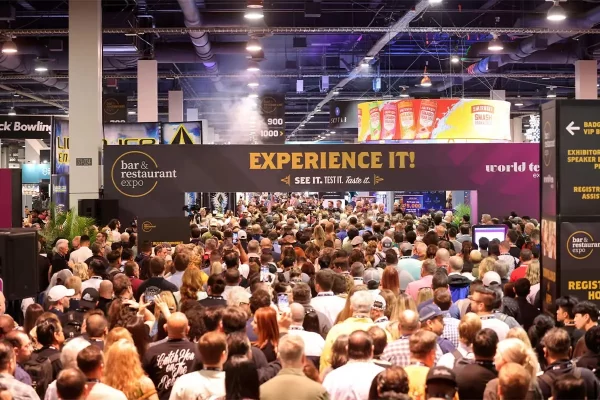The question of outsourcing production is a deep-seated decision for businesses of all sizes in all industries. It’s hard at times to pinpoint all of the benefits and hindrances associated with shifting a component of your business to an external vendor or vice versa. A consideration in the tradeshow and exhibition industry is the pros and cons of keeping graphic production in-house versus outsourcing from an exhibit houses’ perspective.
Before comparing and contrasting our alternatives, I would like to mention that the underlying principles associated with outsourced versus in-house labor are implied and therefore not discussed. This includes the tendency for outsourcing to be more hands off and cost-effective and for in-house labor to have clearer communication channels and be more costly. I will, however, break down what it is that drives costs to fluctuate in this particular instance.
PROS OF IN-HOUSE PRINTING CAPABILITIES
- Enhanced Tradeshow Capabilities – As an exhibit house grows, so should its non-current assets. A large-format printer should be one of the vital stepping stones during the process of become a full-service tradeshow marketing company. This purchase alone opens up a plethora of opportunities and offerings that would not be possible through outsourced labor. The next three pros will illustrate this point.
- Production Flexibility – The drastic increase in production flexibility is one of the single most beneficial upgrades attained from in-house printing. Your project lead times drastically decrease, and the quicker turnaround times will become a major selling point to prospective clients. Pricing on printing becomes much more calculated and provides the ability to guarantee delivery with certainty, which outsourced labor cannot provide.
- Increased Margins – Some would consider this to be the most obvious factor in favor of in-house printing, but this particular point of interest can be deceiving. If the demand is heavy and the printing assets are getting the use required to pay down the high fixed costs of the asset, then the margins derived from the purchase are well worth it. However, if the calculated production falls short, the margins could actually be higher than outsourced graphic costs. This justifies the need for sufficient number-crunching and analysis prior to purchase.
- Increased Operational Scope – The scope of work that an exhibit house has increases exponentially with the purchase of large-format printing assets. Aside from the innate ability to produce tradeshow materials, companies can now produce POS/Retail graphics, B2C graphics and much more. This can be particularly useful for increasing revenues during slow seasons.
- Tax Benefits – Large-format printers are considered capital equipment, allowing for SEC 179 write-off tax benefits in the year of purchase.
CONS OF SELECTING IN-HOUSE OVER OUTSOURCING
- Large Upfront Costs – The most significant con is the large upfront capital outlay and ancillary upfront expenses associated with purchasing an asset of this size. This cost not only includes the purchase of the printer, but also the costs associated with a dedicated professional to operate the machinery. There may also be human capital costs endured when locating and employing a pre-production graphic formatting professional if your company does not already have an individual with this skill set.
- Space Requirements – A printer of this quality requires a dedicated, enclosed space separate from the work shop that may facilitate a need for air filtration, upgraded electrical supply and additional HVAC costs.
- Monthly Variable Costs – There are also monthly variable costs that will be encountered. These costs include ink, substrates, repairs (a repair contract would be a fixed cost) that will fluctuate with demand levels. It is beneficial to keep in mind that replacement parts can run as high as a few thousand dollars per occurrence.
OTHER CONSIDERATIONS FOR IN-HOUSE PRINTING
Aggregate Use/Pre-Existing Demand – The word justify has been used heavily in the consideration of the pros and cons, but when purchasing an asset of this value, “justifying” costs should be a major pre-purchase consideration. In this case, you should be able to forecast an estimated production schedule and calculate with confidence that this printing asset will be used heavily each day.
There needs to be an existing demand for the printing capabilities before making the decision to purchase. The printer would need to be fully utilized almost immediately after installation. Due to the cost, it would be difficult to rationalize this purchase if the pre-existing client demand isn’t high enough to start paying back the investment.





























